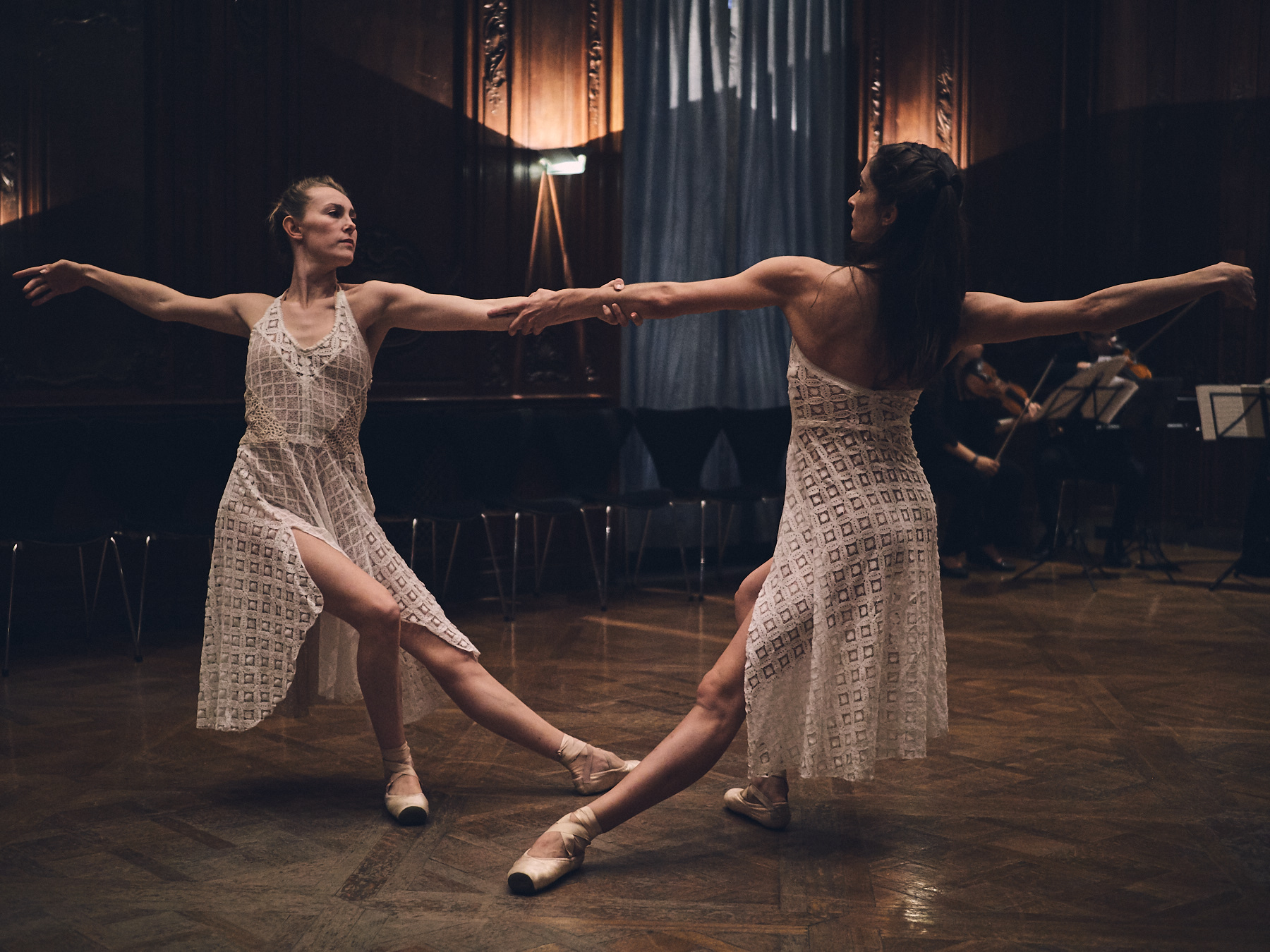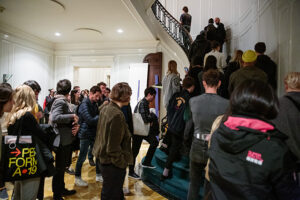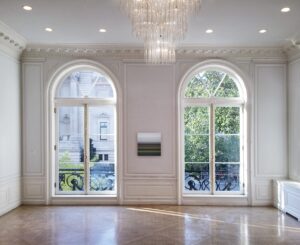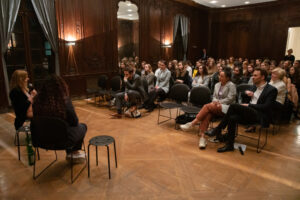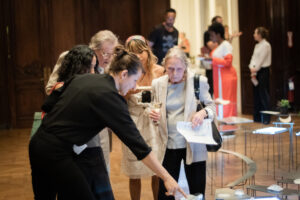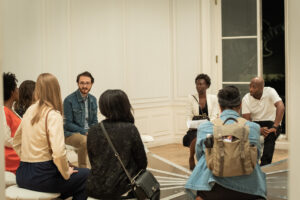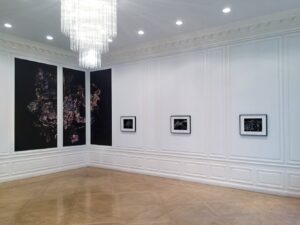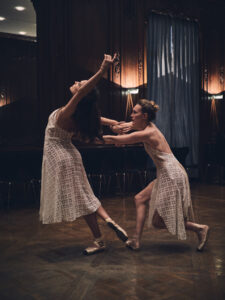There is a new kid on the block, so to speak, of New York City’s Museum Mile that stretches down Fifth Avenue from 110th to 82nd street. 1014 (tenfourteen), the Space for Ideas, has joined the illustrious grouping of esteemed museums including, The Africa Center and the Museum of the City of New York, El Museo del Barrio, The Jewish Museum and The Cooper Hewitt, the Neue Galerie, the Guggenheim, the National Academy Museum, The Metropolitan Museum and even down further, the Frick Museum.
1014 actually offers something completely different from museums and therefore is a wonderful addition as it complements the offerings of art and history with performance art, discussions, and rotating contemporary exhibitions. All of its programs are completely free of charge. According to its website, 1014 creates a space to explore global challenges and opportunities together – across the worlds of culture, ideas and society. With its digital components, 1014 extends its reach beyond the city and offers perspectives from both sides of the Atlantic.
“In an increasingly interconnected and technically advanced world, there are tremendous opportunities. Transatlantic partnership – firmly rooted in democracy and freedom – is necessary to make sure these opportunities will benefit all,” says Andreas Fibig, President and Chairman, 1014.
An example of the far-reaching and contemporary nature of the programming is the current sound installation, I Am Sitting in a High-Dimensional Room, created by artists Philipp Schmitt, Anina Rubin and Dr. Felipe Orduña Bustamente. In this performance, which can be seen online through November 15, the artists leave the physical world behind. The piece is narrated by a neural-network-synthesized voice and performed in a high-dimensional room simulation. It provides a sonic experience of an invisible, unimaginable space. As high-dimensional, mathematical spaces underpin, for example, artificially-intelligent neural networks, the work alludes to dematerialization and abstraction in contemporary science and technology, as well as the virtualization of culture during the COVID-19 pandemic. According to author David Skillicorn, high-dimensional spaces arise naturally as a way of modelling datasets with many attributes. This work was commissioned by 1014 and is co-presented with Media Art Xploration.
Another program that took place just this fall, and which you can still hear on the website, is an innovative series of Conversations on contemporary monuments, titled “Marking Absences – Shifting Narratives”. Conversation #4 – A Matter of Public Inspiration, was held by Naila Opiangah, Walter Cruz, Hank Willis Thomas, Jerald Cooper, Kaneza Schaal and moderated by Niama Safia Sandy. It invited a cross-section of leaders working to bring social justice to their communities to reflect on the landscape of their cities. They discuss how monuments and public art installations can become part of a community’s psyche, acting as extensions of ourselves and our hopes and dreams. The panelists highlight the fixtures in their communities that have shaped and inspired them.
Conversation #3: Sound As Monument was a panel discussion by a different set of artists that shared the sonic textures of the place they work. Every street, every city has an aural character and ephemeral texture. This discussion and recording is a document of the place, and the people who inhabit it, and the lives they lead. Conversation #2: Projecting The Future is a discussion with two artists, Tomie Arai and Alisha B. Wormsley, who are among the 2020 Shaping the Past fellows with Monument Lab and the Goethe-Institut. Their work focuses on creating and maintaining their communities against forces of structural racism, including neglect, urban renewal and gentrification. Arai is a public artist who lives and works in New York City while Wormsley is a cultural producer based in Pittsburgh.
Conversation #1: Un/making a Monument is a panel with Kenseth Armstead, Olu Oguibe, Lava Thomas, Kayla G. Coleman moderated by Desiree Gordon. They discuss the challenges and successes of devising public art projects on the global stage. How are communities invited into the process of developing projects? How do artists and administrators envision art objects as part of the landscape? How does the public respond to the work?
This year, 2020, marks the year of Ludwig van Beethoven’s 250th anniversary. And 1014 is honoring the famous composer from November 8 to 15 with a highly unusual performance arrangement that will be one of the most exciting live exhibitions at 1014 this year. Beethoven for One is an intimate experience by an individual audience member of one of Beethoven’s most celebrated musical genres, the full cycle of his 16 string quartets in seven days. It is a powerful and moving encounter, a beautiful connection between audience (one person), musicians (four people), and space (at 1014 Fifth). This allows for the appropriate social-distancing and safety-protocols and creates an intense musical experience. Sign up for one slot and hear one of Beethoven’s quartet movements and be prepared to experience live music like you have not experienced it before.
Located at 1014 Fifth Avenue right across from The Met, 1014 is in a beautiful town house that was once the home of the U.S. Ambassador to Germany, James Gerard. Since the 1950s until 2009, the building had been the home to the Goethe-Institut which hosted renowned artists, politicians and public intellectuals, such as Willy Brandt, Andy Warhol, and Susan Sontag. 1014 was founded in 2017 as a non-profit at the initiative of the German Federal Foreign Office and the Goethe-Institut. The organization’s transatlantic mandate is an outgrowth of its history and founders. 1014 enjoys initial financial support from the German Parliament but seeks to attract future funding from corporate sponsors as well as private donors and members.”
If you are hungry before or after your visit to 1014, one of our favorite things to do is the most simple of all: Treat yourself to an enormous NYC salted pretzel and a soda from one of the street vendors and sit on the steps of The Met across from 1014 and watch the world go by.
By Victoria Larson, Editor, Side of Culture
VK Larson Communications

